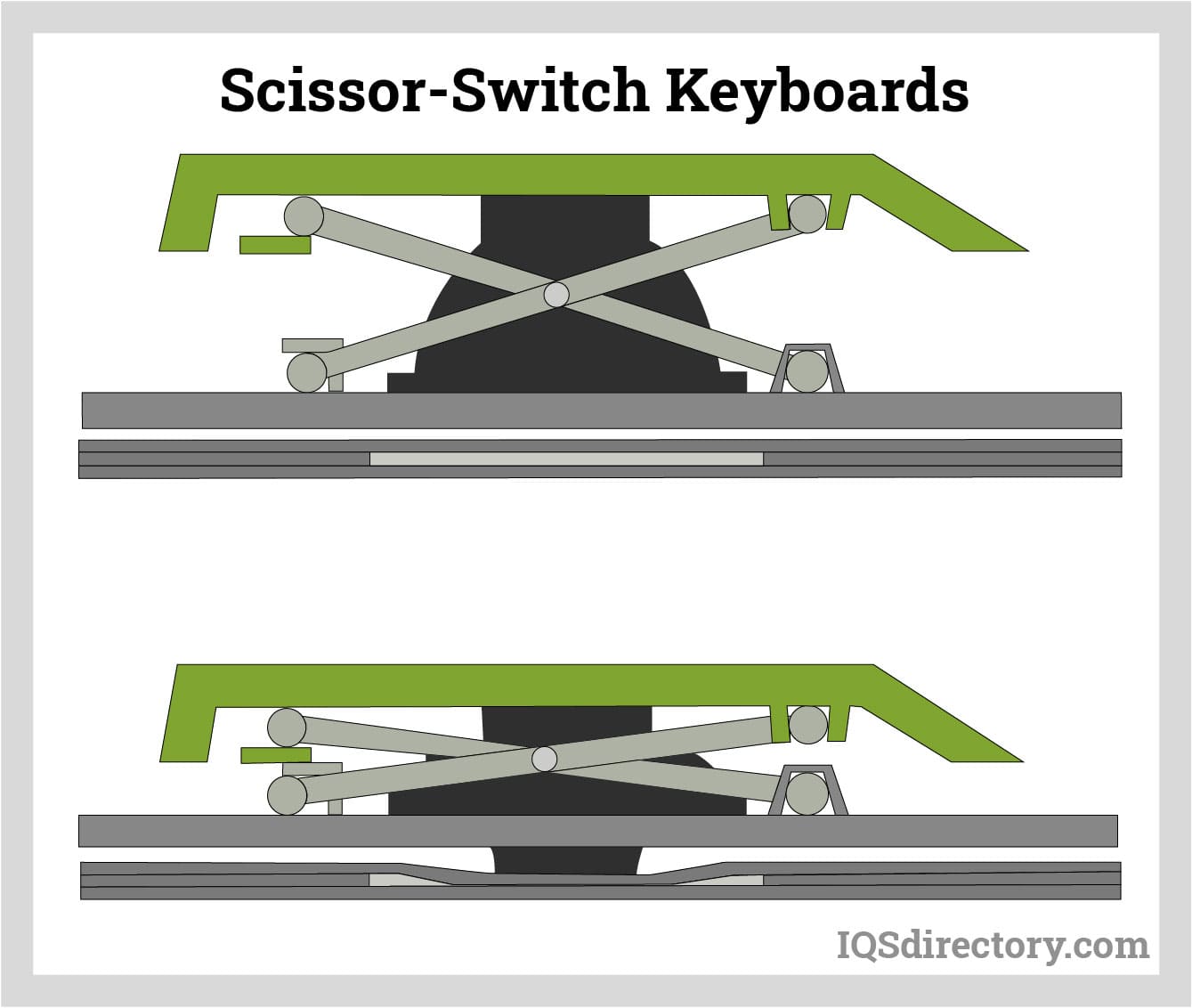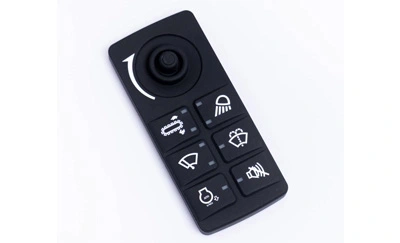Comprehending the Relevance of Membrane Layer Switch Over in Modern Electronic Devices
Membrane buttons are essential elements in contemporary digital devices. They offer a mix of capability and design that boosts individual interaction. Their long lasting and lightweight nature makes them suitable for various applications. As sectors progress, the need for personalization and advanced functions expands. Comprehending how membrane layer switches over add to development discloses their significance in forming the future of electronics. What lies ahead for this technology?
The Fundamentals of Membrane Layer Change Technology
Although often ignored, membrane button innovation plays a vital function in the modern-day electronics landscape - membrane switch. These gadgets, composed of several layers, act as individual interfaces for various electronic items, ranging from home home appliances to clinical equipment. A normal membrane layer button consists of a graphic overlay, a spacer layer, and a circuit layer, which are carefully set up to develop a functional interface.When stress is put on the overlay, the circuit layer is finished, permitting signals to be transmitted to the device. This modern technology is understood for its flexibility, allowing customization in capability, layout, and shape to satisfy particular user demands. Additionally, membrane switches are lightweight and slim, making them ideal for applications where area is a premium. Their longevity and resistance to ecological elements better improve their charm, ensuring they can withstand rough problems while preserving capability. On the whole, membrane switch modern technology is integral to producing user-friendly and reliable electronic tools

Secret Benefits of Membrane Switches
Membrane switches deal a number of vital advantages that make them a favored selection in various digital applications. Their design permits for a compact form element, making it possible for manufacturers to create lightweight and streamlined gadgets. Additionally, membrane buttons are immune to dirt, dampness, and chemicals, which enhances their toughness and longevity in demanding environments. The tactile comments provided by these switches can improve user experience, making them intuitive and very easy to operate.Furthermore, membrane switches can be tailored with diverse graphics and colors, permitting one-of-a-kind branding chances. The manufacturing process is normally affordable, specifically for high-volume manufacturing, as it minimizes setting up time and streamlines layout. Finally, membrane layer changes need very little upkeep, adding to reduced overall functional expenses. These benefits emphasize their growing popularity in modern-day electronics, where dependability and user-friendly user interfaces are crucial.

Applications Throughout Numerous Industries
The versatility of membrane layer switches over allows their widespread fostering across numerous sectors. In the medical field, they are generally used in diagnostic devices and client surveillance systems, providing a long lasting interface immune to impurities. The vehicle sector utilizes membrane switches for control panel controls, boosting customer experience with streamlined layouts that endure extreme problems. In customer electronic devices, they act as control board for devices such as microwaves and coffee manufacturers, offering an easy to use interface that is very easy to clean. The aerospace industry utilizes membrane layer buttons in cabin controls, where reliability and area efficiency are critical. Furthermore, the commercial field leverages these buttons in machinery and control systems to assure durable procedure popular atmospheres. This wide variety of applications highlights the flexibility of membrane switches, making them essential parts in boosting functionality and individual communication across varied technological landscapes.
Modification and Layout Flexibility

Future Trends in Membrane Switch Over Advancement
Emerging patterns in membrane layer button growth suggest a growing emphasis on boosted performance and integration with clever modern technologies. As consumer demand for extra sophisticated electronic tools increases, makers are concentrating on producing membrane layer switches that not only serve basic functional duties however likewise incorporate attributes like touch level of sensitivity, backlighting, and haptic feedback.Furthermore, developments in materials are expected to improve resilience and environmental resistance, making membrane changes suitable for diverse applications in sectors such as medical care, automobile, and customer electronics. The integration of capacitive touch modern technology is likely to come to be more common, permitting sleeker designs and boosted customer interfaces. membrane switch.Additionally, the increase of the Net of Points (IoT) is motivating the development of membrane switches over that can connect wirelessly with other tools, boosting interconnectivity. Generally, the future of membrane layer switch technology appears promising, driven by innovation and the quest of user-friendly remedies
Often Asked Concerns
How Do Membrane Changes Compare to Traditional Mechanical Switches?
Membrane switches, being more space-efficient and offering a smooth style, comparison with typical mechanical switches that supply tactile comments. The former usually include personalized graphics, while the last normally assure sturdiness and dependability in different applications.
What Products Are Typically Utilized in Membrane Switch Production?
Membrane layer buttons are generally created using products such as polyester, polycarbonate, and published conductive inks. These materials supply toughness, versatility, and responsiveness, making them suitable for different applications in digital devices and interface.
Can Membrane Changes Be Fixed or Reused?
Membrane layer buttons can often be fixed, specifically if minor issues occur, such as adhesive failing or surface damages. Total reuse is typically limited due to put on and possible destruction of products over time.
Just How Do Ecological Elements Impact Membrane Switch Performance?
Ecological variables, such as temperature, humidity, and exposure to chemicals, greatly affect membrane layer switch performance. Extreme conditions can result in deterioration, impacting responsiveness and durability, ultimately jeopardizing the functionality of the gadget in different applications.
What Is the Regular Life Expectancy of a Membrane Switch over?
The normal life-span of a membrane button usually varies from 1 to 5 million actuations, depending on elements such as usage regularity, environmental problems, and the materials used in production, affecting toughness and efficiency long life. A normal membrane layer button is composed of a visuals overlay, a spacer layer, and a circuit layer, which are thoroughly assembled to produce a Our site functional interface - membrane switch.When pressure is applied to the overlay, the circuit layer is completed, permitting signals to official statement be sent to the device. The tactile feedback provided by these buttons can boost customer experience, making them simple and instinctive to operate.Furthermore, membrane layer buttons can be tailored with varied graphics and colors, permitting for unique branding opportunities. As consumer need for more innovative digital devices boosts, producers are concentrating on producing membrane layer changes that not just serve fundamental operational duties yet additionally incorporate features like touch sensitivity, backlighting, and haptic feedback.Furthermore, developments in materials are expected to improve sturdiness and environmental resistance, making membrane switches suitable for varied applications in sectors such as medical care, vehicle, and customer electronics. The integration of capacitive touch technology is most likely to come to be a lot more common, enabling for sleeker designs and improved customer interfaces.Additionally, the increase of the Web of Things (IoT) is motivating the advancement of membrane layer switches over that can interact wirelessly with other devices, boosting interconnectivity. Membrane layer switches, being extra space-efficient and using a smooth design, comparison with standard mechanical switches that give responsive feedback